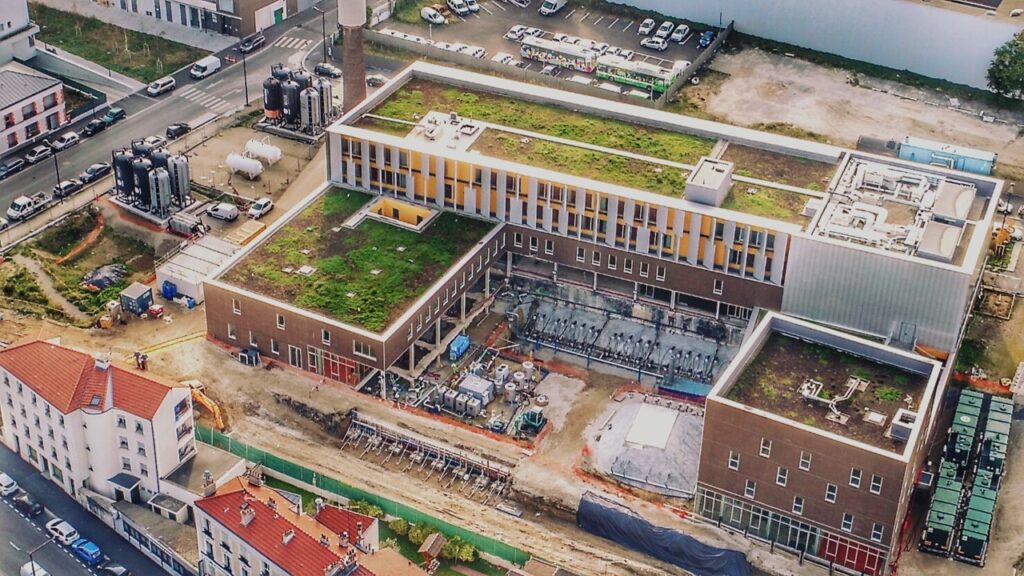GeoPro Talks: Ex-Situ Thermal Desorption of Highly- Impacted Mercury Soils in an Urban Area

In-Situ and Ex-Situ Thermal Desorption (ISTD and ESTD) are technologies based on thermal conduction that can effectively treat organic contaminants, independently of large soil heterogeneity. One of its applications is for contaminated properties in urban areas and under existing buildings. The main principle of the technology resides in installing a network of steel pipes acting […]
GeoPro Talk: PFAS From a Legal Perspective

Description of current regulatory regime for PFAS and potential future approaches.
GeoPro Talk: Soil Vapour Intrusion Investigation: Human Health Risk Assessment for a former Dry-Cleaning Facility

Presenting Soil Vapour Intrusion Investigation including topic introduction, vapour pin installation, ambient air and soil vapour sampling, results, and discussion. In the context of the site and aimed at completing a human health risk assessment.
GeoPro Talks: Online portal for forensic fingerprinting and understanding your Polycyclic Aromatic Hydrocarbon (PAH) data

Polycyclic Aromatic Hydrocarbons (PAHs) are ubiquitous contaminants emanating from multiple sources in the environment. When conducting environmental monitoring of PAHs, it is imperative to examine sources of PAHs to know if they are coming from the source or sources you are investigating. This presentation will cover the fundamentals of what chemical fingerprinting of PAHs works, […]
GeoPro Talks: Contaminated Sites Regulation – still meeting today’s priorities?

Does the CSR and resources spent reflect society’s current risks and priorities? Discussion with a long time practitioner with an industry perspective.
GeoPro Talks: GRAFTA™, a graphene-based technology for multirange contaminant removal from water.

Introducing GRAFTA™, a novel patented graphene-based adsorbent for water and wastewater treatment and in-situ remediation. GRAFTA™ is graphene-based nanotechnology adsorbent, produced partly using waste material, utilizing the exceptional adsorption capacity of graphene and graphene oxide leading to a highly efficient, cost effective and scalable water and wastewater treatment and remediation solution. GRAFTA™ is a proven […]
GeoPro Talks: Why do Toxicity Reference Values (TRVs) Matter at My Contaminated Site?

A fundamental step in risk assessment is establishing what level of chemical contamination is safe. Toxicity reference values (TRVs) represent an exposure dose that people can safely be exposed to without adverse effects. Toxicity reference values are used to derive drinking water and soil quality guidelines, and to calculate hazard quotients (HQs) that determine risk […]
RERUN GeoPro Talks – Understanding PAHs: Get more out of your data, don’t just tabulate – let’s interpret

Polycyclic aromatic hydrocarbons (PAHs) should be treated differently than routine environmental contaminants when measured as part of your environmental investigation. They present with distinctive fingerprints from their sources and move together in the environment as a family of compounds. Therefore, all environmental investigations measuring PAHs should take the time to interpret the PAH results and […]
GeoPro Talks: The Business of Consulting

Environmental Consulting – business or a practice or both? What is involved in the business of consulting? This talk is a brief overview of how we can become better environmental consultants without compromising our values, ethics as well as keeping business aspects in mind.
GeoPro Talks: CFB Comox Firefighter Training Facility PFAS Novel Source Control (with 3-year update)

SLR’s 2021/2022 award winning CFB Comox project implemented novel in-situ and ex-situ PFAS management methods (amendment and thermal treatment, respectively). To reduce PFAS concentrations in downstream site surface water, the highest concentration materials were targeted for management. This presentation will introduce project design and provide an update on environmental conditions three years after implementation.
